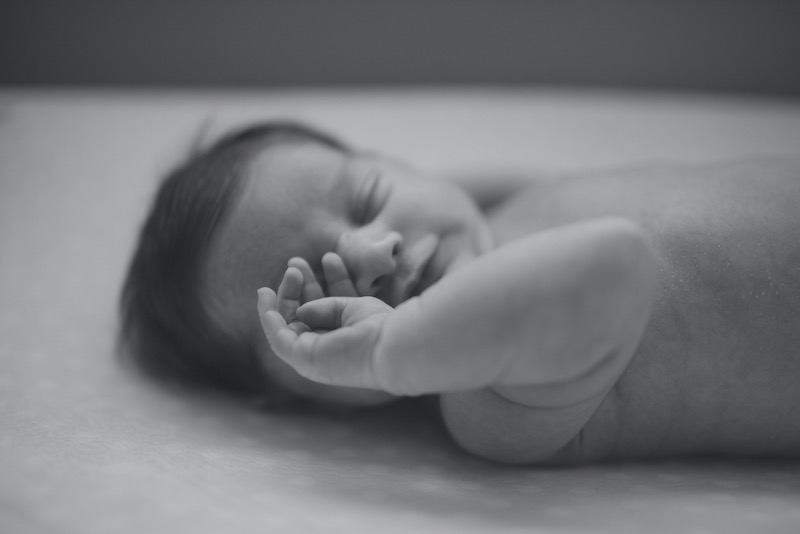The last couple of months have been some of the toughest I can remember. Like most of the country, I was watching the daily briefings and reading the newspapers, my heart sinking as the number of people affected by or dying from Covid-19 kept rising.
Throughout the pandemic, what gave me hope, was the lengths our society seemed willing to go to, in order to protect those most at risk; especially the elderly, those with underlying health conditions and pregnant mums. Sadly, and ironically, just last week, the abortion statistics for 2019 were released – and they broke my heart.
For the second year running, we recorded the highest abortion figures ever experienced in England and Wales. The problem with statistics is that unless we really examine the numbers involved, they are all rather abstract – a meaningless figure that carries no real weight. We become numb to what they truly represent, just another statistic.
So, let’s not blind ourselves to what these abortion figures represent.
Last year, nearly 210,000 unborn babies lost their lives to abortion. Far from remaining static, this figure has increased by just over 19,000 in the last 4 years (DOH). Why is this happening? Why the increase and what does it mean?
Let’s not kid ourselves, the pro-choice movement and abortion providers have been running a very successful campaign. Their aim is to normalise abortion, to the extent that we refer to it as “healthcare”. Fast and easy access, no time to think. It has been positioned such that to oppose it, is to oppose “healthcare for women”.
These statistics show that four out of ten women who had an abortion last year, had at least one previous one. That percentage has increased, from 34 per cent to 40 per cent over the last ten years. More and more women are finding themselves scared and worried, locked in a perpetual cycle where they feel their only choice is to abort their baby.
But there is hope. Abortion is not an inevitable result, no matter what the situation; there are alternatives. Over the last 50 years our services at Life have saved and transformed the lives of hundreds of thousands of mums, dads and their babies through our national “Pregnancy Matters” services which include a national helpline for pregnancy related concerns, pregnancy loss and post abortion issues. We also offer education, housing and practical support. We know that our support means a woman doesn’t have to choose between her future and her baby. Every year more than 27,000 women turn to Life for help; how many more could it be if more women knew that abortion is not their only choice?
During the first weeks of lockdown, information started to filter through that some vulnerable people were being“‘pressured” to sign “do not attempt to resuscitate” orders. These included the elderly, some people with learning disabilities and some with autism. There was national outrage that this could happen, and rightly so. Many groups rushed to give guidance to avoid this in future.
However, it is important we ask ourselves why it happened. Let’s return to 2019 for an answer. Under ground E of the abortion act we have allowed abortions for “serious” disability up to birth. This number has increased by 85 per cent since 2009. Not many people are aware that “serious” disability has been interpreted to include conditions such as Down’s Syndrome, cleft palate and cleft lip (a condition that is treatable with an operation). In 2019, 17 abortions were performed for cleft palate and cleft lip, compared to three in 2009; 656 abortions were carried out for Down’s Syndrome, again an increase from the previous decade.
There is clearly not enough support for families who are informed of a disability diagnosis. There is fear in our society about disability, to the point where Heidi Crowter, a young woman with Down’s Syndrome, is compelled to make this statement: “I have Down’s Syndrome, and my life is just as important and just as joyful as anyone else’s.” It is shocking and an abhorrent reflection on our society that she feels the need to say this. But the sad fact remains that too many people need to hear it.
There is a bill being debated in Parliament, lead by Fiona Bruce MP called the Abortion (Cleft Lip, Cleft Palate and Clubfoot) Bill which will aim to stop abortions taking place for those conditions and I would beg you to ask your MP to support this bill. We need more support for families, more information about these conditions and less pressure to believe that abortion is the only option. As another disability rights campaigner said; this is not about choice, this is about discrimination.
We might not want to believe it, but each abortion discriminates in one way or another; sometimes it’s on disability, sometimes gender; more often than not it discriminates based on age. As Life’s founder, Jack Scarisbrick says: “We have declared a whole section of the human family to be inferior and disposable.” To be clear, to normalise abortion is to normalise the end of the life of an unborn child. The normalisation of abortion is vastly reducing our respect and care for life and if we don’t do something to turn the tide soon, we may find ourselves at a point of no return.
When push comes to shove, as we’ve seen in the last few weeks, our default position is to protect life, to recognise its innate dignity and to work together for the common good. If I were to normalise something it would be to normalize support, to normalise life-affirming, positive alternatives and to normalise protection for those who are most vulnerable. This is completely achievable; we just have to want it badly enough and recognise that every life is precious.
Elizabeth Parsons is director of advocacy at Life where she has worked for more than 13 years. She is a trained teacher and during her time at Life has spoken to more than 65,000 students on prolife issues as well as representing Life in the media.



 Loading ...
Loading ...
What do you think?
You can post as a subscriber user ...
User comments (0)